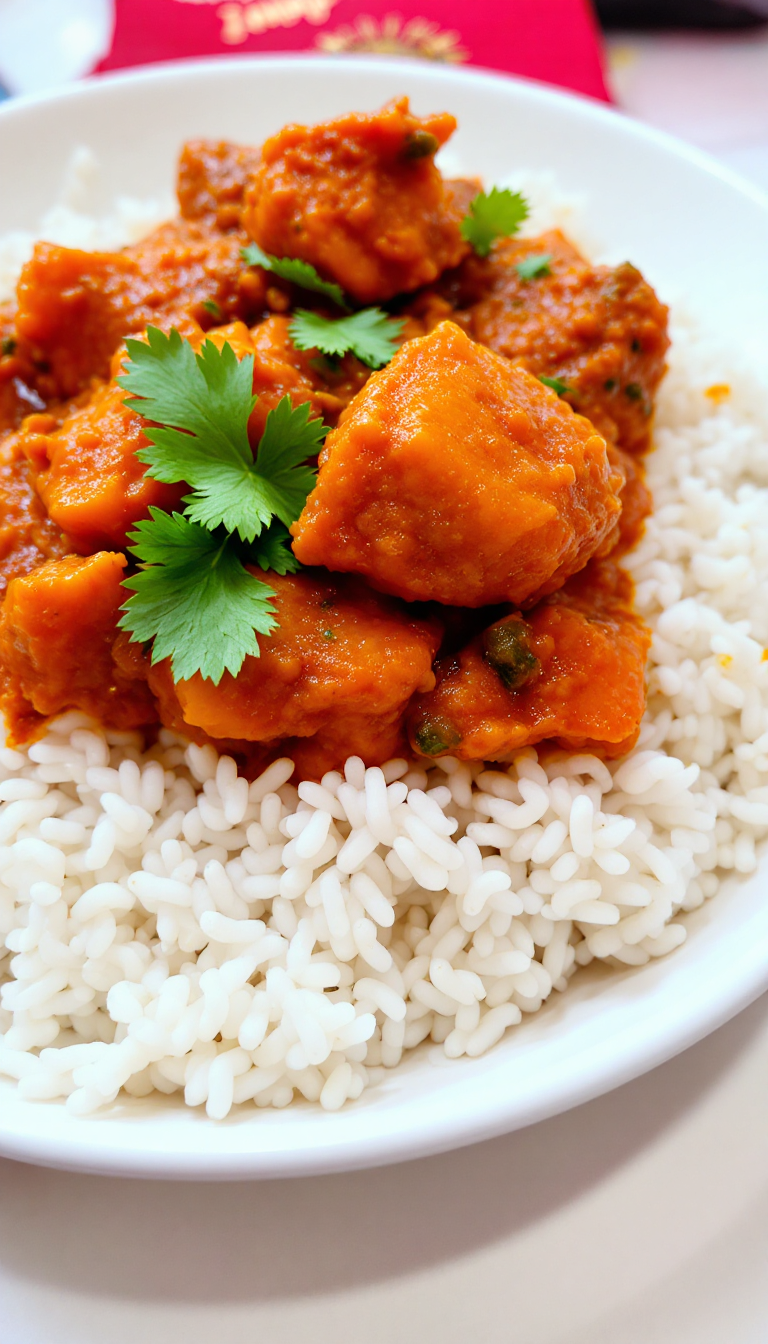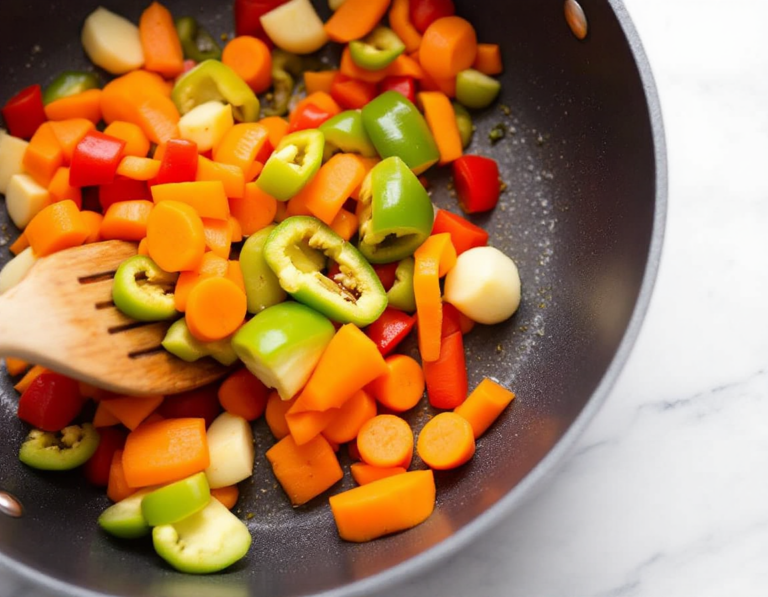
If you’re anything like me, the mere thought of a creamy, aromatic curry can make your heart race—seriously, it’s like a warm hug from the inside. This vegan Thai red vegetable curry is an absolute gem, with its vibrant colors and fragrant spices. I remember whipping it up on a rainy Thursday, the kind of day where you just want to wrap yourself in a cozy blanket, and it transformed my kitchen into a tiny haven of exotic scents.
Steps
- Start by cooking the rice: Boil a large pot of water, add rinsed rice, and let it boil for 30 minutes, adjusting heat to prevent overflow. Once cooked, drain and return the rice to the pot, cover, and let it rest for at least 10 minutes. Just before serving, season with salt and fluff with a fork.
- Prepare the curry: Heat a large skillet over medium heat, add oil, and cook the onion with a pinch of salt until it softens and becomes translucent, about 5 minutes. Stir in the ginger and garlic, cooking until fragrant, around 30 seconds.
- Add vegetables: Incorporate the sliced bell peppers and carrots, cooking until the bell peppers are tender, approximately 3 to 5 minutes. Stir occasionally as you cook.
- Add flavor: Mix in the curry paste, stirring frequently for about 2 minutes. Then, add the coconut milk, water, kale, and sugar, stirring everything together.
- Simmer the curry: Bring the mixture to a simmer over medium heat, then reduce the heat as needed to maintain a gentle simmer. Cook until the vegetables are tender, about 5 to 10 minutes, stirring occasionally.
- Final touches: Remove from heat and stir in tamari and rice vinegar, adding salt to taste. Adjust seasoning as needed with more tamari or vinegar for added flavor.
- Serve: Divide the rice and curry into bowls. Optional garnishes include chopped cilantro and red pepper flakes. For extra heat, serve with sriracha or chili garlic sauce on the side.

Ingredients
- 1 ¼ cups brown jasmine rice or long-grain brown rice, rinsed
- 1 tablespoon coconut oil or olive oil
- 1 small white onion, chopped (about 1 cup)
- Pinch of salt, more to taste
- 1 tablespoon freshly grated ginger (about a 1-inch piece)
- 2 cloves garlic, minced or pressed
- 1 red bell pepper, cut into thin 2-inch strips
- 1 yellow, orange, or green bell pepper, cut into thin 2-inch strips
- 3 carrots, peeled and sliced into ¼-inch thick rounds (about 1 cup)
- 2 tablespoons Thai red curry paste
- 1 can (14 ounces) regular coconut milk
- ½ cup water
- 1 ½ cups thinly sliced kale, tough stems removed (preferably Tuscan/lacinato/dinosaur kale)
- 1 ½ teaspoons coconut sugar, turbinado sugar, or brown sugar
- 1 tablespoon tamari or soy sauce
- 2 teaspoons rice vinegar or fresh lime juice
- Optional garnishes/sides: chopped fresh basil or cilantro, red pepper flakes, sriracha, or chili garlic sauce
FAQ
- Can I substitute the vegetables in this Thai red curry recipe?
- Absolutely! You can swap in different vegetables as long as they are sliced into small, similar-sized pieces. Options like broccoli, cauliflower, mushrooms, diced butternut squash, sweet potato, zucchini, or yellow squash work well. Keep in mind that some might require a longer cooking time.
- What type of coconut milk should I use for this curry?
- For the best results, use full-fat coconut milk as it provides a rich and creamy texture. Avoid light or reduced-fat versions, as they won’t achieve the same level of creaminess.
- How can I make this recipe gluten-free?
- To make this Thai red curry gluten-free, simply use tamari instead of regular soy sauce. Tamari is a gluten-free alternative that provides a similar flavor.
- Is it possible to add protein to this dish?
- Yes, you can add tofu for extra protein. It is recommended to bake the tofu first and then add it to the curry along with the coconut milk. Baking enhances the tofu’s texture and prevents it from absorbing too much liquid from the curry.
- What should I do if I want a spicier curry?
- For a spicier kick, you can serve the curry with sriracha or chili garlic sauce on the side. Additionally, you can sprinkle some red pepper flakes on top when serving.
Tips
- Incorporate a variety of aromatics such as onion, ginger, and garlic to enhance the flavor of the curry.
- Opt for full-fat coconut milk to achieve a rich and creamy texture; it will make a noticeable difference in the dish.
- Adjust the flavor balance by adding rice vinegar and sugar to introduce complexity and a hint of sweetness.
- Feel free to experiment with different vegetables, ensuring they are chopped into similarly sized pieces to ensure even cooking.
Equipment
- Large pot (for cooking the rice)
- Large skillet with deep sides (for making the curry)
- Fine grater or microplane (for grating fresh ginger)
- Garlic press (for pressing garlic)
- Rice cooker (optional, for cooking rice if preferred over stovetop method)